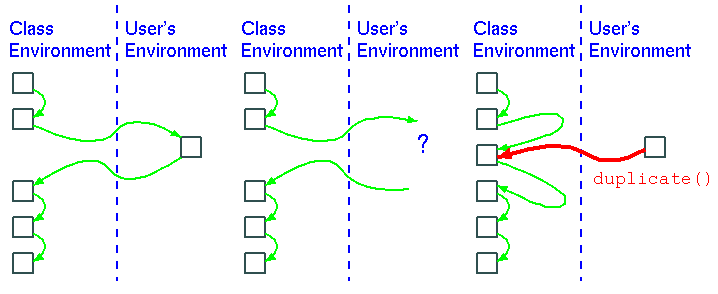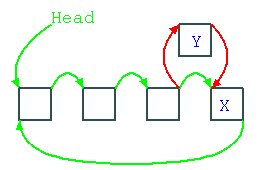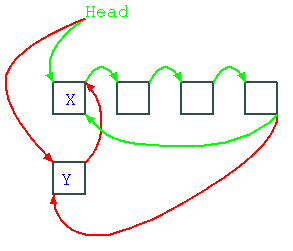
In order for a class to provide a reliable service, the class should not depend on what the user does with his data. Therefore, a class should always operate on copies of objects provided by the user.
The List class is a nice example for why this is a good idea. Suppose we would let the List class link in the user's object directly (Left diagram), and the user later decides to modify the object. Perhaps the object will even get destroyed (middle Diagram). This will definitly modify the behaviour of the list, if only that elements suddenly disappear.
We will therefore require that every Listable have a duplicate() member function which will create a copy of itself. Consider this as a virtual copy constructor (right diagram).

Let's review the operations necessary for inserting an element:
// copy is Y, this is X copy->next_ = this; copy->prev_ = this->prev_; this->prev_->next_ = copy; this->prev_ = copy; |

|
// copy is Y, this is X
copy->next_ = this;
copy->prev_ = this->prev_;
this->prev_->next_ = copy;
this->prev_ = copy;
// Special Case
if (list_->head_ == this)
list_->head_ = copy;
|

|